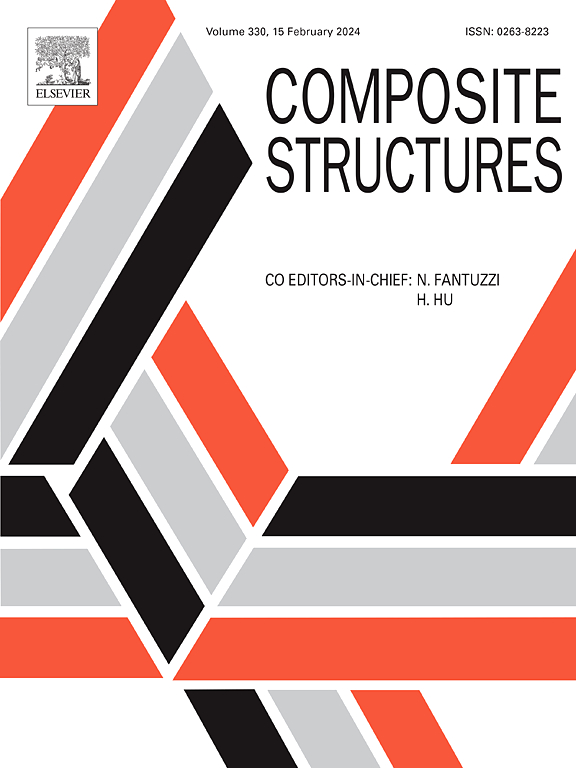Numerical analysis of ultrahigh velocity impact of micro abrasive particles on Cf/SiC composites
IF 6.3
2区 材料科学
Q1 MATERIALS SCIENCE, COMPOSITES
引用次数: 0
Abstract
The present study provides an innovative finite element modeling approach to investigate the material removal behavior of distinct shaped abrasive particles impacting different regions and damage mechanisms of Cf/SiC under ultrahigh velocity abrasive particles impact. The simulation results indicate that among the four investigated abrasive shapes, the polygonal prisms abrasives exhibit the best material removal capability, achieving removal rates of 0.440, 0.538, and 0.589 in the matrix region, fiber region, and fiber–matrix interface region, respectively-all exceedingly twice those of spherical abrasives. The study analyzed the reasons why polygonal prisms abrasives exhibit optimal material removal capability from two perspectives: the sphericity and roundness of abrasive particles, and the stress contour plots during abrasive impact on the material. Additionally, compared to pure fiber and matrix regions, the interface between fiber and matrix is more prone to material damage, particularly when using spherical abrasives. Further analyses reveal that the main reason for crack damage along the fiber bundle direction is that the Cf/SiC interface layer increases energy dissipation through crack deflection.
微磨粒对Cf/SiC复合材料超高速冲击的数值分析
本研究提供了一种创新的有限元建模方法来研究不同形状的磨粒撞击不同区域的材料去除行为以及超高速磨粒撞击下Cf/SiC的损伤机制。仿真结果表明,在四种磨料形状中,多角形磨料的材料去除率最佳,在基体区域、纤维区域和纤维-基体界面区域的去除率分别为0.440、0.538和0.589,均是球形磨料的两倍以上。本研究从磨料颗粒的球度和圆度以及磨料冲击材料时的应力轮廓图两方面分析了多角镜磨料具有最佳材料去除能力的原因。此外,与纯纤维和基体区域相比,纤维和基体之间的界面更容易发生材料损伤,特别是在使用球形磨料时。进一步分析表明,沿纤维束方向产生裂纹损伤的主要原因是Cf/SiC界面层通过裂纹偏转增加了能量耗散。
本文章由计算机程序翻译,如有差异,请以英文原文为准。
求助全文
约1分钟内获得全文
求助全文
来源期刊

Composite Structures
工程技术-材料科学:复合
CiteScore
12.00
自引率
12.70%
发文量
1246
审稿时长
78 days
期刊介绍:
The past few decades have seen outstanding advances in the use of composite materials in structural applications. There can be little doubt that, within engineering circles, composites have revolutionised traditional design concepts and made possible an unparalleled range of new and exciting possibilities as viable materials for construction. Composite Structures, an International Journal, disseminates knowledge between users, manufacturers, designers and researchers involved in structures or structural components manufactured using composite materials.
The journal publishes papers which contribute to knowledge in the use of composite materials in engineering structures. Papers deal with design, research and development studies, experimental investigations, theoretical analysis and fabrication techniques relevant to the application of composites in load-bearing components for assemblies, ranging from individual components such as plates and shells to complete composite structures.
 求助内容:
求助内容: 应助结果提醒方式:
应助结果提醒方式:


